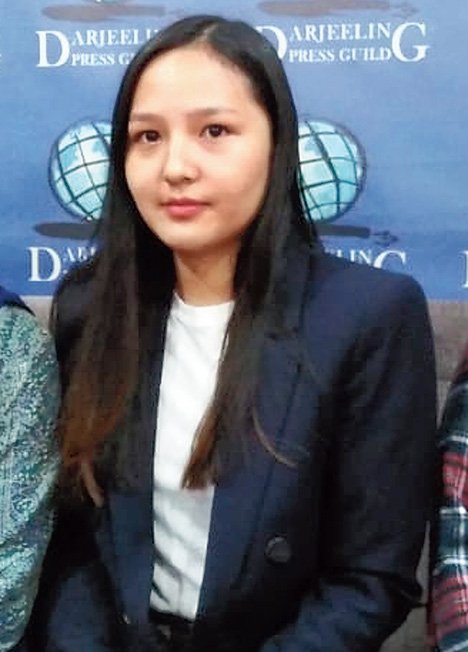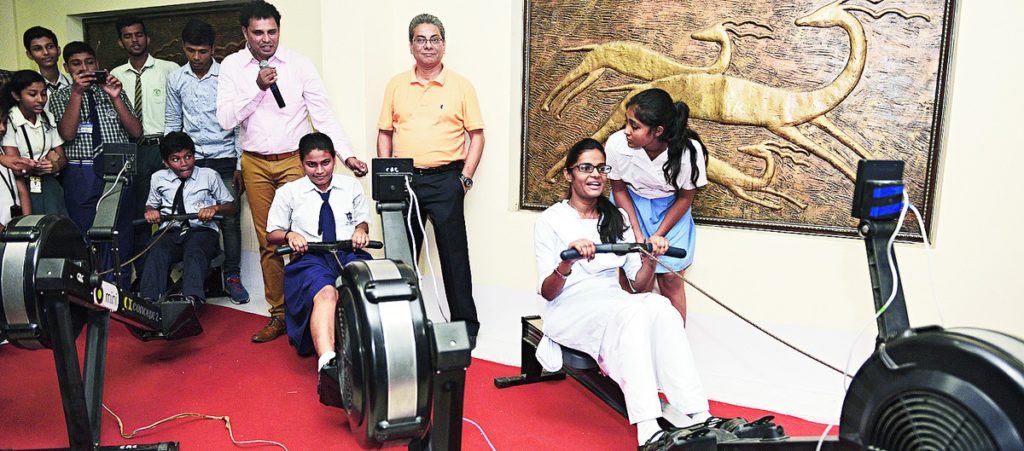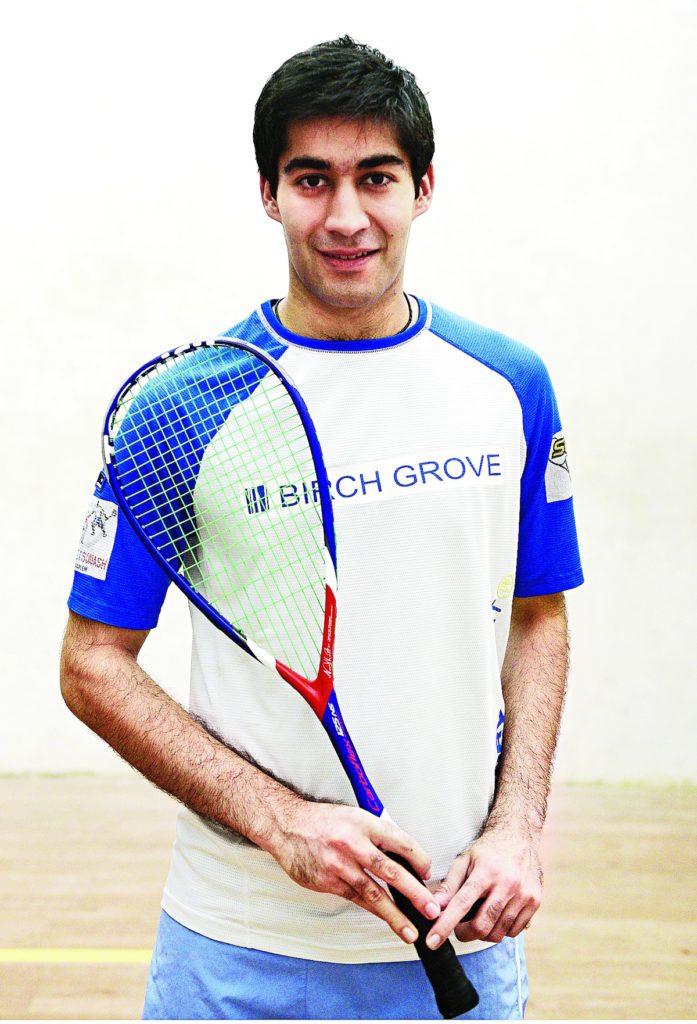Monthly Archives: September 2018
12
Scholarship for hill girl

Darjeeling:
Swareena Gurung, a-21-year-old student from Darjeeling, has bagged a Rs 34 lakh scholarship from Bengal government to pursue a post-graduate course at University of London.
Gurung, who completed her graduation from Miranda House in Delhi in literature, had applied at the School of Oriental and African Studies (SOAS) at the University of London and at the University of Oxford.
“My first preference was SOAS and I am also happy that I got a sponsorship of 36,526 pounds, which roughly translates to around Rs 34 lakh for MA South Asian Area Studies programme under the Bishwa Bangla Masters Scholarship,” said Gurung.
The one-year master degree course is specific to south Asia. The student, who completed her ICSE from St Helen’s School, Kurseong, and did her Plus Two at Loreto Convent, Darjeeling, had also got a seat at University of Oxford.
“Two students from Bengal get this scholarship every year. Bengal government has a tie-up with the SOAS but it is the university that selects the candidate for scholarship,” said Gurung.
The scholarship includes college fees to the tune of 18,980 pounds while the rest will be paid as maintenance expenses in three equal instalments.
Gurung’s major module would be culture. “We have to select a major module and I have selected culture, under which I will be studying politics and culture of contemporary south Asia,” said Gurung.
The student will be joining classes on September 24.
Asked about her plans, Gurung said: “I have kept my options open – either going for further academics or staring my career in journalism.”
Sudeep Gurung, the girl’s father, said: “We would like to thank the chief minister of West Bengal Mamta Banerjee and her government for introducing a scholarship through which students can pursue higher studies overseas.”
Sudeep is a businessman.
source: http://www.telegraphindia.com / The Telegraph,Calcutta,India / Home> West Bengal / by Vivek Chhetri / September 11th, 2018
Virtual boat race for students
100 schools from city & districts to take part in contest

Calcutta:
Fifty schools from the city and as many from 10 districts will take part in a rowing contest without water or racing boats.
The tournament, to start on Monday, will see the students pull hard on indoor rowing machines, which will be wired to a laptop, to cover a 250m lap.
A projector will be used to beam the virtual race on a big screen for everyone to see and cheer.
Accomplished rowers from the city schools will be barred from participating in the tournament.
“The idea is to introduce newcomers to the sport. So, accomplished rowers in the city schools will not be allowed to participate in the contest. In the districts, there are hardly any rowing facilities,” said Shakil Ahmed of Bengal Water Sports, which is organising the tournament in association with the Bengal Olympic Association and Calcutta Rowing Club.
The tournament will be held in three age categories – U-12, U-15 and U-18. Three teams – one in each category- will be selected from each boys’ or girls’ school and six teams from each co-educational institution.
Each team will have three members.
The winning teams will vie with one another at the district level. The district champions will lock horns at the state-level contest to represent the “rest of Bengal” in each age category at the national meet.
Similarly, the best teams from the city will represent Calcutta at the national meet.
The national champions will represent India in the final, to be held in Calcutta on December 2.
Schools from Sri Lanka, Bangladesh and Nepal will take part in the final contest.
A demo for novices was held at Calcutta Rowing Club on Sunday. Nitu Shaw, a Class IX student of Andrew’s High School, was ecstatic after trying her hand at a virtual boat race.
“The next time I row, I will do much better. It was thrilling to see the boats move ahead on the big screen as we rowed. It was a tough battle between me and the girl next to me for the second position,” she said.
source: http://www.telegraphindia.com / The Telegraph,Calcutta,India / Home> Calcutta / by Rith Basu / September 10th, 2018
09
08
07
Squash wins back its star, India gets medal
Calcutta boy’s sport-or-job battle

Picture by Gautam Bose
Calcutta:
Ramit Tandon’s journey from La Martiniere for Boys in Calcutta to the winners’ podium at the 2018 Asian Games hasn’t followed the usual curve of sporting success achieved through sweat and the sacrifice of myriad other ambitions.
The 26-year-old, who also studied at Columbia University, was till a year ago analysing equity and debt markets sitting in the New York office of a hedge fund. Squash remained his passion, but primarily as a leisure activity.
Last Friday, Ramit won an Asian Games bronze in Jakarta along with teammates Saurav Ghosal, Harinder Pal Singh Sandhu and Mahesh Mangaonkar, all three of them regulars in the competition circuit.
Ramit had quit his job in New York to turn pro only last November. His Professional Squash Association (PSA) ranking then was above 600. Over the next few months, he won two PSA titles to break into the top 60, good enough to earn him a spot in the Indian team for the Asian Games.
“I used to badly miss being in competitive squash. The travelling, the pressure (to perform), the adrenaline rush and, of course, the honour of representing the country,” Ramit told Metro at the Saturday Club, where he hits a ball or two whenever he is in town.
At the Asian Games, Ramit won all but one of his matches. He counts his performance against Qatar in a crunch match in the group stage as his personal favourite. He did not play a match in the semifinal against Hong Kong because the two players before him had lost theirs, making the rest of the contest inconsequential.
While the gold medal eluded India, Ramit sees the bronze as a vindication of his decision to become a squash pro.
So, what made him finally choose squash over a shirt-and-tie career? “Hedge funds require balancing risk and return. I thought it was time I did it for myself instead of clients,” he said. “I was earning well. I had to factor in so many things, including the possibility of a comeback to my earlier career if I failed in squash.”
As a student, Ramit had been regarded as a promising player in the junior circuit. Between 2001 and 2011, Ramit had won a string of national championships in successive age groups. He was the captain of the India Under-19 team that won a gold medal in the Asian Junior Championships in Sri Lanka in 2011.
But studies won the competition when it came to choosing a career. “I had had a decent schooling. When I got a chance to study at Columbia University, I did not want to let go of it. After my graduation in statistics, I got an analyst’s job with Birch Grove,” he recalled.
Now that squash has won back what it lost, Ramit intends to be loyal to the sport. And nobody’s complaining.
source: http://www.telegraphindia.com / The Telegraph,Calcutta,India / Home> Calcutta / by Debraj Mitra / September 04th, 2018
Jamdani that is out of the box
The Textile Show by CCI presents contemporary versions of traditional craft
“Our craft has to grow and adapt. It has to be a living tradition and not just be preserved as our heritage. Which is why innovation and thinking out of the box help,” says Sarita Ganeriwala, founder of Karomi, an organisation that works with the women weavers of West Bengal, focussing on the myriad possibilities of Jamdani technique.
“Karomi works with urban and rural artisans and ours is weaver-centric organisation. The focus is keeping the craft alive. For me, the product comes ahead of the story of the weaver. We develop high quality products with high functionality,” she says.
Karomi products are not just ethnic, but have a contemporary feel,” Sarita points out, adding that her art background has enhanced her design interpretations. A textile design graduate from NIFT Delhi, Sarita was joined by Sarika Ginodia, a chartered accountant, to provide a sustainable business leadership to the firm.
Disha, founded by Amrita Chaudhary, works with 400 women artisans of the Shekhawati region in Rajasthan and engages them in tie-and-dye. It has made the women self-reliant by forming a self-help group. The stories of Karomi and Disha are woven by the skilled weavers from economically marginalised regions of Shekhawat and West Bengal. All the three women who have spearheaded this revolution will participate with their creations at the Textile Show organised by Crafts Council of India (CCI), in the city.
Disha provides a dignified livelihood for vulnerable women. Its activities include assistance in creating SHGs, skills training, promoting children’s education and very importantly, conducting awareness workshops on women’s social and legal rights. The 400-member SHG founded by Disha is trained in tie-and-dye and the Japanese craft of shibori to create saris, dupattas, stoles and running fabric in chanderi, tussar, and mulberry silk.
“Our design mission is to bring together the classic and the contemporary. We handover out complete designs to our weavers and they are also involved in the design development process from the beginning. At times, design intervention takes place at the loom level,” says Sarita.
Karomi has developed a special range of khadi and khadi blends for the Chennai exhibition. “We have brought products in plain khadi, khadi-linen, among others, all with the jamdani style of weaving. This collection is most suitable for Chennai’s weather,” says Sarita. Karomi received the UNESCO Award of Excellence for Handicrafts — Jamdani stoles in 2012 and again in 2014.
At the exhibition, Disha will showcase shibori saris, stoles, and dupattas. These artisans also use fine bandhini work on chanderi and silk saris. The Karomi design story is all about natural fabrics and linen woven in the jamdani style, inspired by colour blocking and geometrics, all woven by women weavers in remote villages of West Bengal.
The Crafts Council of India (CCI) is a volunteer-run, not-for-profit NGO working for the sustainable growth and development of India’s crafts and it’s craft artisans.
The Textile Show is at CCI’s Kamala Crafts Shop, Egmore, September 6 to 8, 10.30 am to 7 pm. For details, call 28191457.
source: http://www.thehindu.com / The Hindu / Home> News> Cities> Chennai / by Chitra Deepa Anantharam / September 05, 2018
Kolkata revives the romance of the Raj

Two colonial-era buildings to get a new lease of life as hubs of art and culture
Two of Kolkata’s oldest colonial buildings, Currency Building and Metcalfe Hall, both built in the 19th century, will soon become museums and galleries showcasing art and urban history.
The three-storied Currency Building in Dalhousie Square was built in 1833. Designed in the Italian style with Venetian windows and cast iron gates, its vaults and strong room once housed some of India’s oldest banks, including Agra Bank and the Reserve Bank of India.
But now the western wing is all set to become the office of the National Gallery of Modern Art (NGMA). Once the NGMA moves in, the Currency Building will host an exhibition of sketches and sculptures by Ramkinkar Baij, a pioneer of modern Indian sculpture.
“We are expecting that a portion of the Currency Building will be handed over to us by September. There are plans to have a large exhibition on Ramkinkar Baij,” said Adwaita Gadanayak, director general of NGMA.
Archaeologists say the Currency Building was not a mint but a place where currency was kept. Till 1937, it was occupied by the RBI, after which it fell into neglect. Its central dome collapsed later. The Archaeological Survey of India (ASI) took over its upkeep in 2005.
Barely 200 m away is Metcalfe Hall, with 30 Corinthian pillars built between 1840-1844. Located at the junction of Strand Road and Hare Street, it draws its name from Lord Metcalfe, the Governor General of India in 1835-36. It is in this structure that the city’s history will come alive as the ‘Calcutta to Kolkata’ exhibition.
Renovation dilemma
The ASI grappled with the question whether to rebuild the Currency Building’s dome, but decided to keep the existing structure.
In Metcalfe Hall, it shifted one lakh books for repair work. “The exhibitions will bring them back to life,” said G. Maheswari, Superintend- ing Archaeologist, ASI, Kolkata circle.
source: http://www.thehindu.com / The Hindu / Home> News> States> Other States / by Shiv Sahay Singh / Kolkata – September 02nd, 2018
